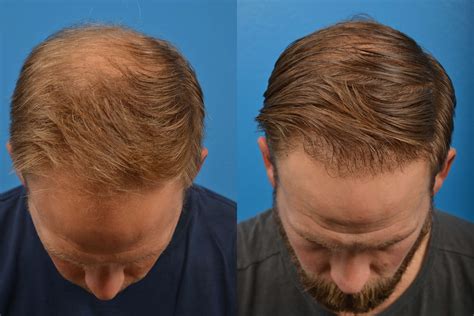1. What is Hair Replacement Hair?
Hair replacement hair refers to artificial or real hair used in addressing hair loss. The American Hair Loss Association estimates that over 50 million men and 30 million women in the United States experience hair loss. Hair replacement has become a popular option for restoring a natural hair look and boosting self-confidence.

2. Types of Hair Replacement Hair
2.1 Synthetic Hair
Synthetic hair is made from artificial materials like nylon, acrylic, or polyester. It’s typically less expensive and easier to style than real hair. However, it can be less breathable and less durable than natural hair.
2.2 Human Hair
Human hair is harvested from human donors. It is more expensive than synthetic hair, but it offers a natural look and feel. Human hair can be treated with heat and chemicals like natural hair.
3. Hair Replacement Hair Systems
There are multiple hair replacement hair systems available:
3.1 Wigs
Wigs are complete hairpieces that cover the entire scalp. They come in various styles, colors, and lengths. Wigs are a convenient option but can be noticeable if not fitted properly.
3.2 Toupees
Toupees are smaller hairpieces that cover only part of the scalp, typically the top. They are designed for partial hair loss and are less noticeable than wigs.
3.3 Hair Extensions
Hair extensions involve adding additional hair to the existing hair to create volume and length. They can be attached using various methods, including clips, tapes, or fusion.
4. Benefits of Hair Replacement Hair
4.1 Enhanced Appearance and Confidence
Hair replacement restores a natural hair look, boosting self-confidence and improving social interactions.
4.2 Concealing Hair Loss
Hair replacement provides a solution for those with hair loss due to genetics, hormonal changes, or medical conditions.
4.3 Versatility
Hair replacement systems offer different styles, colors, and lengths, allowing for customization and personalization.
5. Common Mistakes to Avoid
5.1 Choosing the Wrong System
Selecting the right hair replacement hair system depends on hair loss patterns and personal preferences.
5.2 Using Low-Quality Hair
Low-quality hair appears artificial and can damage the natural hair.
5.3 Improper Maintenance
Regular cleaning, conditioning, and styling are critical for maintaining the life and quality of hair replacement systems.
6. Step-by-Step Approach to Choosing Hair Replacement Hair
6.1 Determine the Hair Loss Pattern
Identify the areas of hair loss and consult a hair loss specialist for guidance.
6.2 Consider Budget and Lifestyle
Hair replacement systems vary in cost and maintenance. Determine the best option based on financial constraints and lifestyle.
6.3 Research and Consult
Explore various hair replacement systems and consult with hair loss professionals to find the best solution.
6.4 Try Different Options
Experiment with different hairpieces and systems to determine the most suitable and flattering.
6.5 Proper Maintenance
Follow the recommended maintenance instructions to preserve the quality and longevity of the hair replacement system.
7. Key Considerations for Choosing Hair Replacement Hair
- Type of hair loss: Determine the type of hair loss (e.g., male pattern baldness, female pattern baldness, alopecia areata) to select the most suitable hairpiece.
- Hair texture and color: Match the hair replacement hair to the natural hair texture and color for a natural look.
- Lifestyle and activity level: Consider daily activities and exercise routines to choose a system that suits lifestyle needs.
- Maintenance: Determine the amount of maintenance required for different hairpieces and choose one that aligns with time availability.
8. Conclusion
Hair replacement hair can be a life-changing solution for those experiencing hair loss. By choosing the right hairpiece and following proper maintenance, hair replacement can enhance appearance, boost confidence, and restore a sense of normalcy. Embracing hair replacement can open doors to improved social interactions and a more fulfilling life.
Additional Questions to Engage Customers
- What are the main concerns you have about hair loss?
- How has hair loss impacted your self-confidence and social life?
- What are your expectations for hair replacement and how it can improve your life?
- What concerns or questions do you have about hair replacement systems?
- How can we assist you in finding the best hair replacement solution that meets your needs and expectations?
Table 1: Types of Hair Replacement Hair
| Type | Material | Pros | Cons |
|---|---|---|---|
| Synthetic | Nylon, acrylic, polyester | Less expensive, easy to style | Less breathable, less durable |
| Human | Human hair | Natural look and feel, can be treated like natural hair | More expensive, requires more maintenance |
Table 2: Hair Replacement Hair Systems
| System | Coverage | Pros | Cons |
|---|---|---|---|
| Wigs | Covers entire scalp | Convenient, various styles | Can be noticeable if not fitted properly |
| Toupees | Covers part of scalp | More discreet, designed for partial hair loss | Less variety of styles |
| Hair Extensions | Adds volume and length | Versatile, customizable | Can damage natural hair if not applied correctly |
Table 3: Benefits of Hair Replacement Hair
| Benefit | Impact |
|---|---|
| Enhanced appearance | Boosts self-confidence, improves social interactions |
| Concealing hair loss | Provides solution for genetic, hormonal, or medical hair loss |
| Versatility | Offers different styles, colors, and lengths for customization |
Table 4: Common Mistakes to Avoid
| Mistake | Impact |
|---|---|
| Choosing wrong system | May not meet hair loss needs or lifestyle |
| Using low-quality hair | Appears artificial, damages natural hair |
| Improper maintenance | Shortens lifespan, affects appearance |
